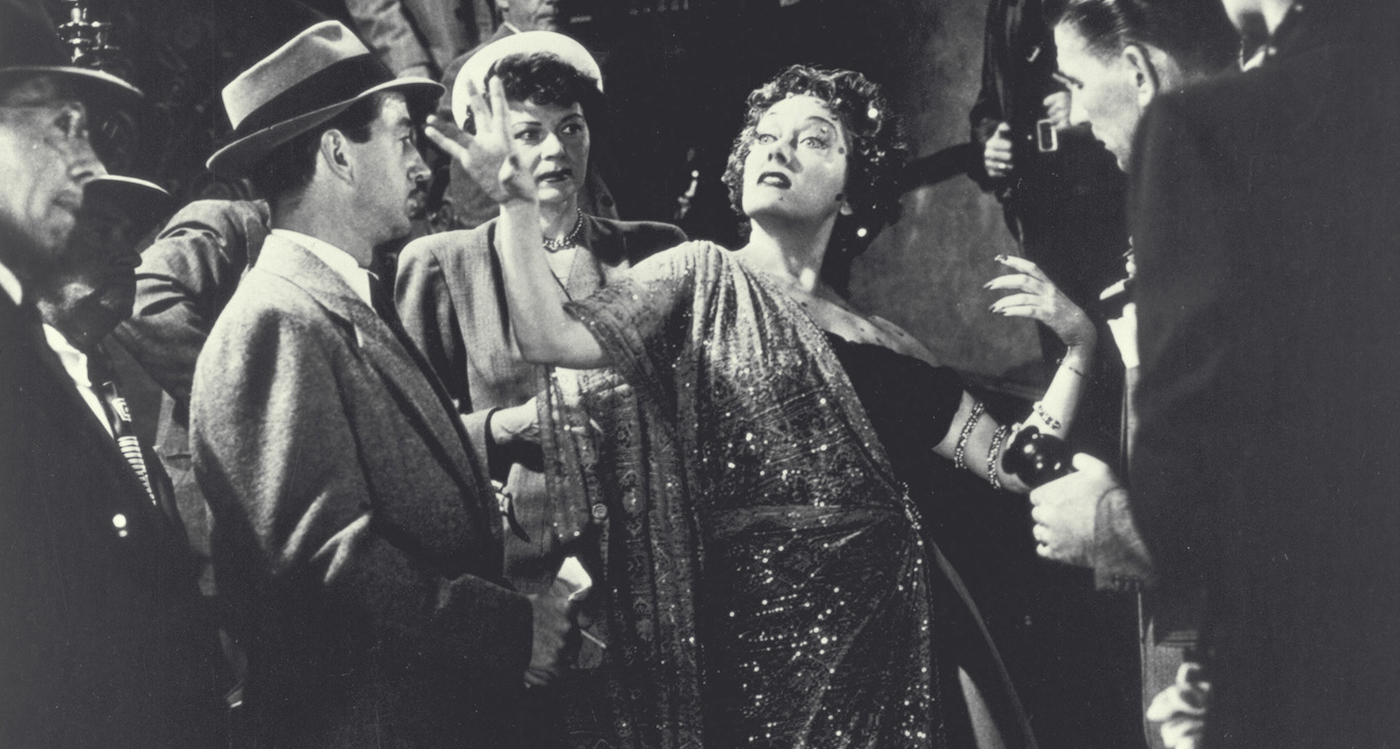
There is an argument to be made that there could be an investigative series starring Paramount’s senior vice president of archives Andrea Kalas and costume and prop archivist Randall Thropp. Among their myriad of responsibilities for the vast archives of one of Hollywood’s most legendary studios, Kalas and Thropp are often called upon to act as asset sleuths, uncovering iconic (and lesser known) props, costumes, and more from Paramount’s 111 history that were scattered across the globe before the archives department was created.
They’re also quick to tip their caps to their equally passionate colleagues, like costumer and restorer Betsey Potter, who might be called upon to recreate a dress worn by Barbara Stanwyck in The Lady Eve, while music archivist Liz Kirkscey might piece together a piece played in an old film, on her piano, which she has in her office.
We spoke to Kalas and Thropp about their roles in Paramount’s Archive Department, why their work is not just about preserving the past but helping filmmakers and TV creators make the next future hit, and how some of the most memorable costumes of all time used to be re-used—again and again—before the archives department existed.
You’re both in constant contact with some of cinema’s most enduring objects and images, which sounds pretty amazing.
Andrea Kalas: It’s just a complete privilege to be able to work around all these different amazing objects that represent so many different kinds of creativity. When Olivia Newton-John died, for instance, it was so sad, and I immediately thought of the moment when we were restoring Grease, and we had the opportunity to listen to just the vocal track because we were re-mixing it. Listening to her voice so clearly, with no accompaniment, you got this amazing view into her talent. That comes true all the time working in archives.
And Paramount has some of the most iconic films of all time…
Kalas: Seeing, for example, the production design that Dean Tavourlaris did for The Godfather, where the New York street is so incredibly detailed and composed with this true craftsman’s ability, or a music score and hearing the work of these incredible musicians. This is why, in my opinion, movies are the greatest art form ever, right? They’re every art form. And so having that ability to work in the archives, you just get exposure to that kind of thing every day.
Sticking with The Godfather (1972) for a second, what happens to some of those iconic pieces of the wardrobe, considering that film long predates the archives department? Did actors take them home back then?
Randall Thropp: That’s a good question. We don’t know. We have done quite the search, trying to track down where some of this stuff has gone; every now and then, a piece will show up in an auction, and if we can buy it, we’ll try to buy it. But really, it’s amazing—they just kind of evaporated. I would love to have one of the key principal pieces from The Godfather in the collection. Supposedly, things went back into the costume department, but there’s no trace of that. Again, there was no archive then; there was nobody setting things aside and considering them important at that time. That’s something that’s just happened over the last probably twenty years or so that studio archives have become repositories for some of these great pieces.
Kalas: Once upon a time, every studio was making sixty movies a year, so everything existed on this one lot and was being constantly used and reused. Tons of costumes and jewelry that could have been used in many, many movies. Then, as we moved away from that kind of factory manufacturing of movies on the lot to location shooting and other things, the idea of keeping things around for reusing them went away. After a while, the old idea of actually having a costume shop at all started to fade. Then, a lot of those costumes were sold and auctioned off, creating the collector’s market that still exists today. And that’s one of the challenges for us; we will try to acquire back a piece if we see it on auction, but they’re very, very pricey. It’s a much bigger investigation into how Hollywood studios have changed and to trace wear costumes and props when over time.
It’s wild to think of an iconic costume, like the tuxedo Marlon Brando is wearing at the beginning of The Godfather, popping up in another movie on another actor.
Kalas: Or it might have been rented, and they returned it to the rental shop.
Turning to props for a second, I have to ask—do you have a favorite prop, Randall?
Thropp: One of my favorite pieces I have on display is a butter gun that was carried by Antonio Banderas in the SpongeBob Movie: A Sponge out of Water (2015). It was the first prop that I received that was made on a 3D printer, and it’s a very heavy piece, but it’s so beautifully crafted. That’s my appreciation for what I’ve been able to save and do is a celebration of creative people.
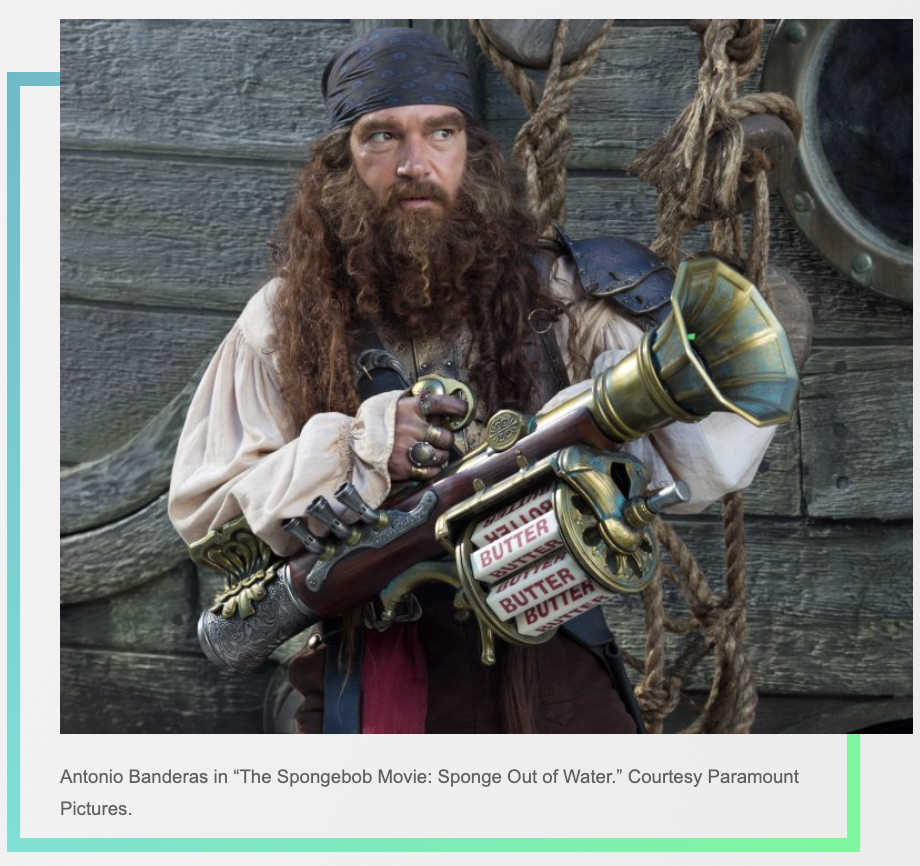
Can you talk me through a couple more standout props and costumes?
Randall Thropp: I’m very proud of the historical collection I was able to build because a lot of the costumes were still in the rental department. Then, when they dismantled the rental department, I was able to go through and pull what I could identify and what I felt were key pieces or important pieces. We had very few props and the props that we did have had been squirreled away under a stage. The props were downstairs, like from The Addams Family (1991), and there were some very good pieces from Addams Family Values (1993), too. Barbara Stanwyck’s dress from The Lady Eve (1941), the one she wore when she trips Henry Fonda in an iconic scene. Cary Grant’s sport coat from To Catch a Thief (1955), one of Roy Rogers’s fringed jackets from Son of Paleface (1952), and of course, there’s Lyda Roberti, who is pretty much forgotten now, but she was in a film called Million Dollar Legs (1932), we have a dress that’s in need of restoration because it’s a quite heavy beaded dress that she wears when she comes down the stairs and sings a song that she’s the hottest thing. It’s so weird, I love that movie.
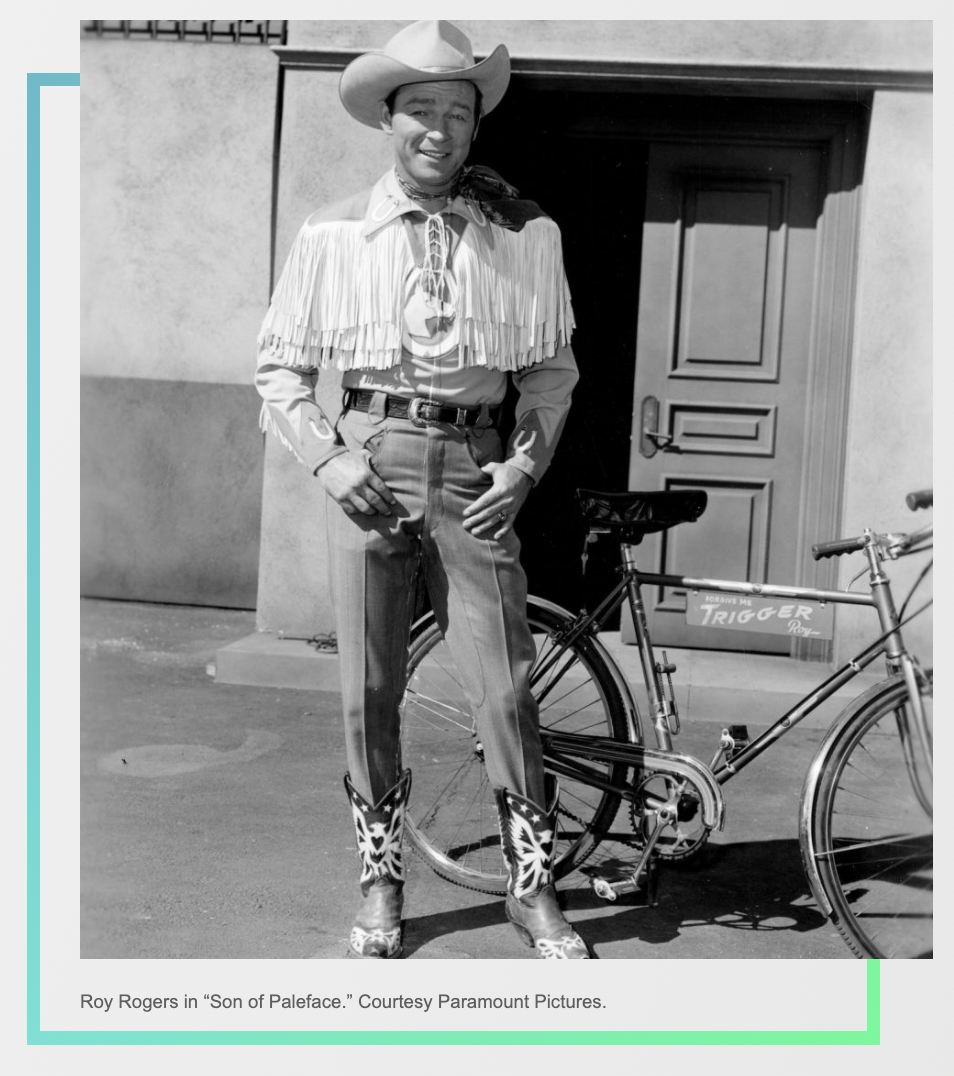
And were any of these pieces reused in other films?
Thropp: The Barbara Stanwyck dress from The Lady Eve. She has a beaded Bolero top that Edith Head had designed with that outfit, and over the years, I’ve found at least three different actresses wearing that for publicity photos. It was used in the big costume ball scene in To Catch a Thief, there’s a woman who’s supposed to be the hostess, and she’s barely seen, but she’s in this enormous green ball gown. That gown was originally designed for Casanova’s Big Night for a featured actress. And then Edith Head reused that, with different jewelry, for To Catch a Thief. And then somebody else reused it, but we don’t know where, and they replaced the whole backside of the dress. Then Betsy Potter, who does our costume restorations, meticulously dyed and matched this green fabric to match the backside of the dress because someone had taken the backside off and made it a yellow-green.
Any favorite costumes or props from the modern Paramount era?
Thropp: There were some really interesting props from the Transformers franchise, also from Mission: Impossible. I love Mission: Impossible props because they are small; most of them are handheld because they’re props that you would conceal, not something big and bulky because you’re going to be carrying them in your pocket. Also, Star Trek had some really great things over the years.
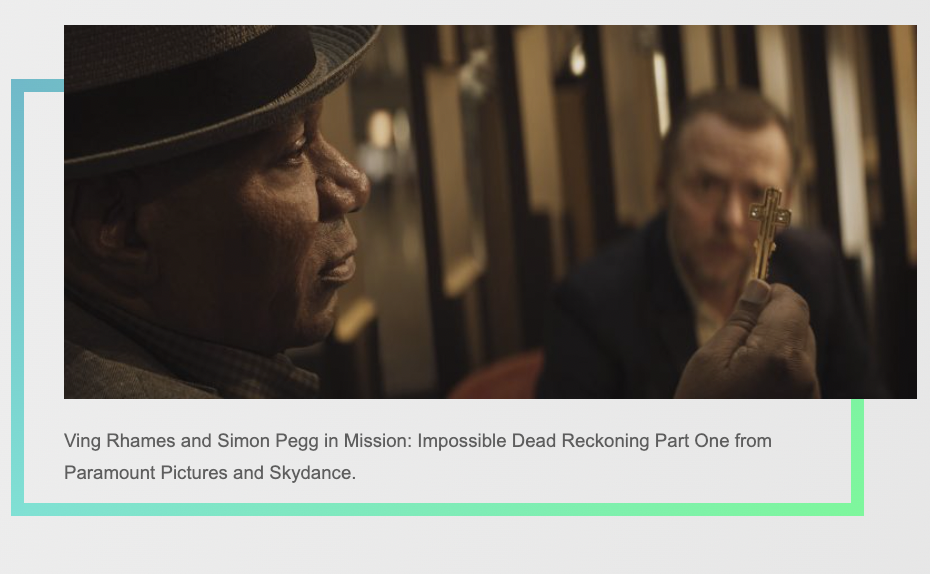
Andrea, any particular favorites of yours?
Kalas: One of my favorite costumes is one Randall actually put together from the amazing film Double Indemnity (1944). Randall noticed the different pieces that make up the costume that Barbara Stanwyck wears in the supermarket scene—there’s a skirt, there’s a vest, and there’s a blouse. And Randall put it together. But I do have a really corny answer to this question, which is my favorite thing in the archive is the actual archivists who work in it. Randall’s amazing, our music archivist, Liz Kirkscey is amazing—she has a piano in her office, as you do when you’re a music archivist. Her knowledge of the story of music in Hollywood is so comprehensive and incredible. And Charlotte Barker, who heads up our preservation restoration group and who knows our library and does an incredible job of restoring and preserving films. Other studios have different archives sort of scattered around, we’re all under one roof.
And if I pressed the issue and asked you for one absolute favorite, non-human piece of the archive?
Kalas: I think Sunset Boulevard (1950) because it also stars the Paramount lot. We worked on restoring it a few years back, and it just kept rising and rising in my mind in terms of how great it was at just every level. And one of my favorite stories about Sunset Boulevard is we actually reached out to the cinematographer’s son, who’s in real estate. We brought him in – just wanted to express our gratitude to somebody who was related to the great John Seitz. And I said to him, ‘You could really argue that your father invented film noir cinematography.’ And he said, ‘Well, you know, actually, he was just really glad for a job. He got fired from Fox because he was shooting an actress too well, and they didn’t like the actress. A totally Hollywood story, and he just told us very matter-of-factly. And you have to remember that in addition to the great work that you see, there’s also the rough and tumble side of everyday work too, and I just loved that story.
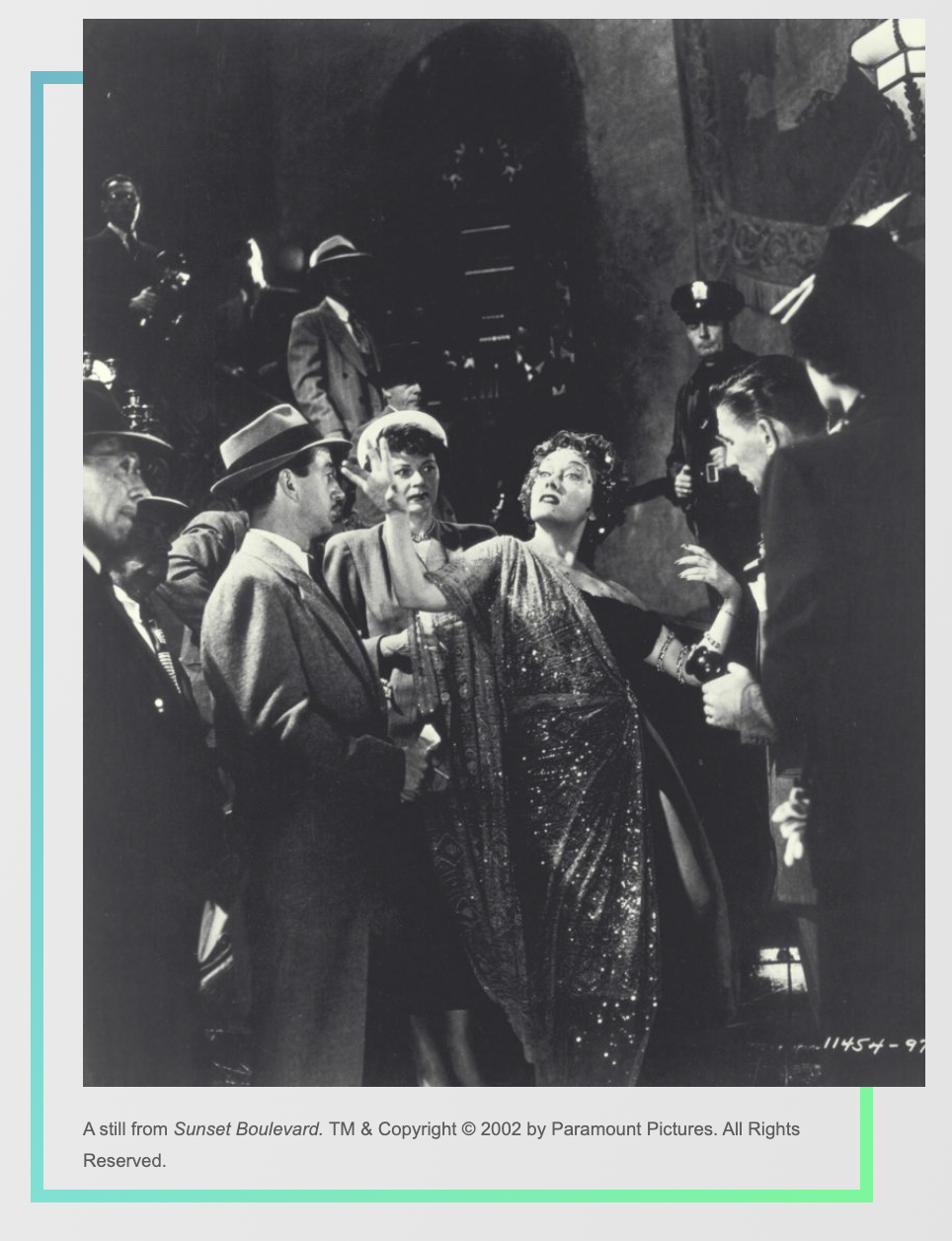
Returning, a final time, to The Godfather. In 2022, Paramount Plus released The Offer, which was centered on the incredible story behind getting Francis Ford Coppola’s masterpiece made. And it made me think how for archives, you’re not just about preserving history, but you’re often called upon to help current filmmakers and TV creators with their work. Can you speak to that a bit?
Thropp: For The Offer, we worked with them to try and identify what the Paramount back lot looked like then and what the security guards would have been wearing at that time. And so we did a lot of research for The Offer with the production designer [Laurence Bennett].
Kalas: One of my favorite things is when a director actually comes to us and says they want to watch some movies that will help them think about how to approach their new movie. We’ll hold screenings, and they’ll watch films that might have the same style or some sort of thing that they want, and I love that.
This article was first published on The Credits